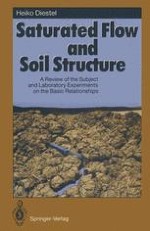1993 | Buch
Saturated Flow and Soil Structure
A Review of the Subject and Laboratory Experiments on the Basic Relationships
verfasst von: Professor Dr.-Ing. Heiko Diestel
Verlag: Springer Berlin Heidelberg
Buchreihe : Springer Series in Physical Environment
Enthalten in: Professional Book Archive
